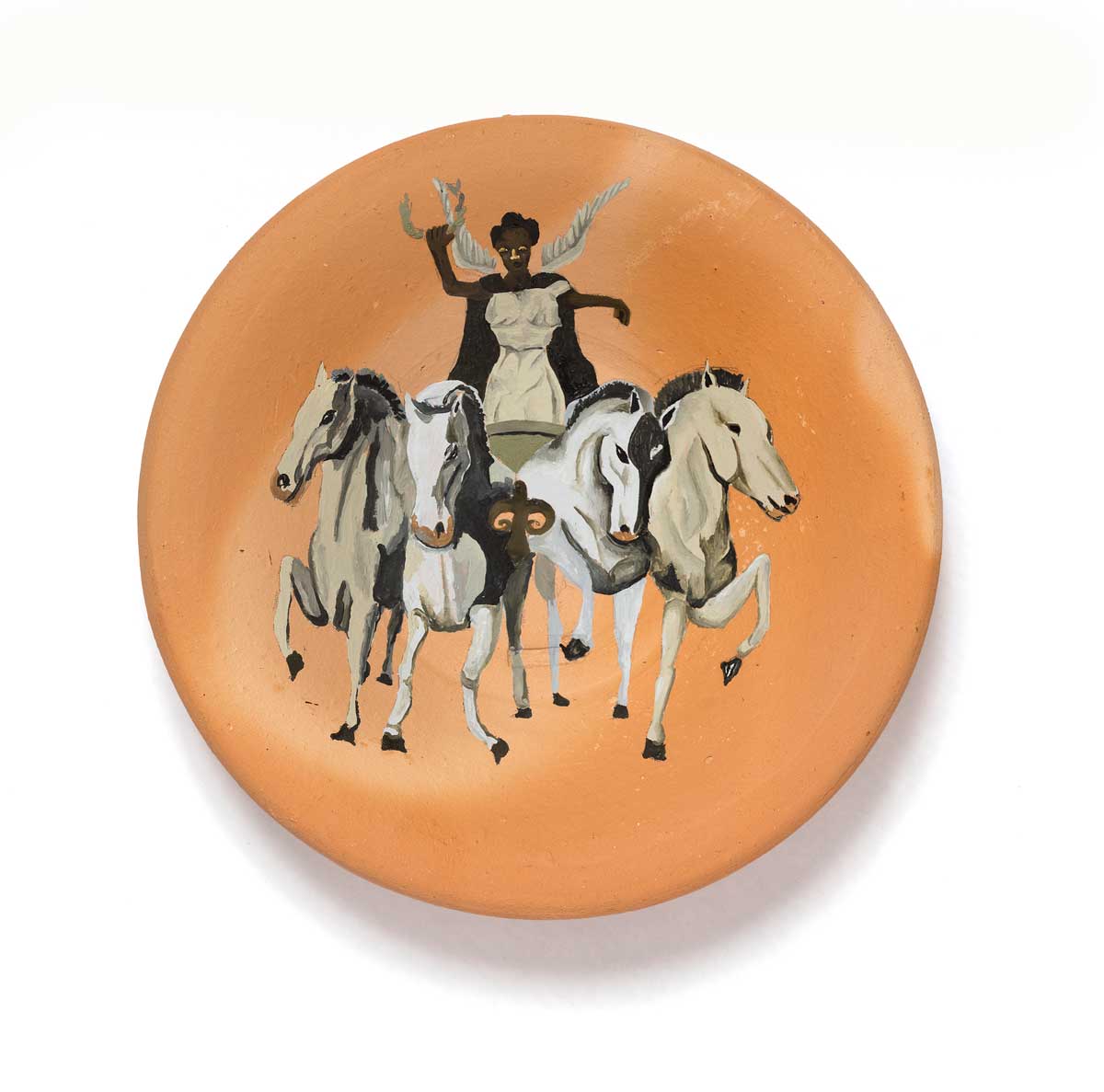
Rota do tabaco [Tobacco Route], 2016
In Dalton Paula’s work objects are deprived of their original functions to become paintings. First, the covers of encyclopedias, those old-fashioned keepers of universalist knowledge, are painted over with representations of subjects and facts often omitted from their content, such as black and indigenous history and peoples. Now this procedure is repeated on a set of ceramic bowls used for food and also offerings in African-Brazilian religious rituals. With the painting on the inside, these objects confront the hegemonic discourses of art and politics, search for new characters and reenact passages from our history. Piracanjuba (in the State of Goiás), Cachoeira, (in the State of Bahia) and Havana (in Cuba) are three cities that produce tobacco. This economic activity dates back to the colonial past and the migration of Africans enslaved in the Americas. Paula traveled to the three points on this Rota do tabaco [Tobacco Route] (2016) to research how this heritage appears today. He found everything from the precarious work conditions in the cigarillo factories to the use of cigars as an icon of the communist revolution. In the vast imagery portrayed, tobacco is an omitted context, which reveals the contrast between black bodies and white clothes, between the invisibility of African-Brazilian culture and the curative legacies – medicinal and spiritual – extracted from tobacco.
